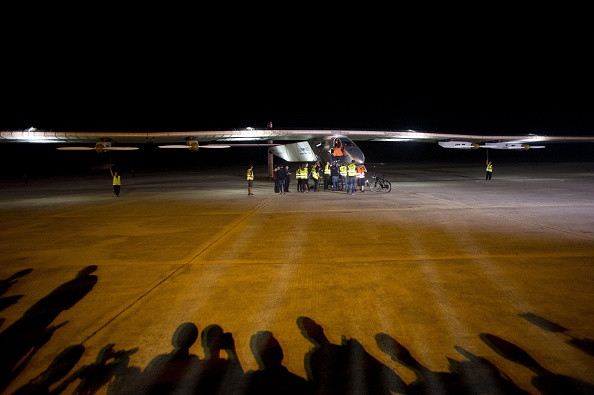Solar Impulse 2 to land at Nagoya due to bad weather a day into longest leg of flight

Owing to bad weather conditions over the Pacific the Solar Impulse 2 will be landing in Nagoya, according to the latest tweet from the team.
The support team reassessed the situation early on 1 June and decided to land after bad weather ahead blocked the flight path to Hawaii. The flight will resume when weather conditions improve.
The team had hoped to cross the bad weather front ahead before Hawaii on day five and asked the pilot to hold positions, but weather conditions have worsened.
The Solar Impulse 2 aircraft had flown for more than 24 hours over the Sea of Japan after it set off on the seventh and longest leg of its quest to circumnavigate the globe powered only by the sun.
After being delayed for almost two months in China owing to weather, it took off from Nanjing in China on 31 May with Pilot Andre Borschberg, 62, at the helm.
It was flying between North Korea and Japan at about 4pm GMT (midnight Singapore time), according to a tweet posted by his team.
The 8,500km flight from Nanjing to Hawaii could set a record for duration by a single pilot, organisers said.
The overnight flight would be the first time the aircraft would have flown through the night relying on battery power.
Solar Impulse 2 is powered by more than 17,000 solar cells built into wings which at 72m are longer than that of a Boeing 747.
During day the plane will rise to an altitude of 9,000m when the sun will charge its batteries but at night with the engine switched off, the plane will glide down to 1,000m and run on the energy stored in its four lithium ion battery. By the end of the night it will have around 5-10% battery charge.
High cirrus clouds can limit the amount of energy harvested by the solar cells.
The flight at night can also encounter the trade winds blowing to the west which can slow it down.
Failure to keep the plane going will call for a parachute descent into the ocean.
Andre Borschberg, who has been trading places with Bertrand Piccard, Solar Impulse's chairman and co-founder, on the epic journey, has been practising yoga and meditation to face the challenges of the long flight alone.

Besides the change in altitude daily, the pilot will also experience temperature changes of 55C in the unpressurised, Solar Impulse 2 cockpit. Nap time will be short.
"It's more in the end about myself; it's going to be an inner voyage," he told BBC News. "It's going to be a discovery about how I feel and how I sustain myself during these five or six days in the air."
The light weight craft weighing a bit over two tonnes travels at a maximum speed of 140km/h.
The Solar Impulse trek, which began on 8 March in Abu Dhabi saw the plane touch down in Oman, India and Myanmar and to China where it has been held for almost two months due to weather conditions.
Before taking off from China, André Borschberg told media, "This is the moment of truth. If successful, this flight to Hawaii will demonstrate the credibility of the vision Bertrand had 16 years ago of an airplane flying for days without fuel to change our mindset regarding the enormous potential of clean technologies and renewable energies."
The craft is the successor of Solar Impulse, which notched up a 26-hour flight in 2010, proving its ability to store enough power in lithium batteries during the day to keep flying at night.
© Copyright IBTimes 2025. All rights reserved.





















